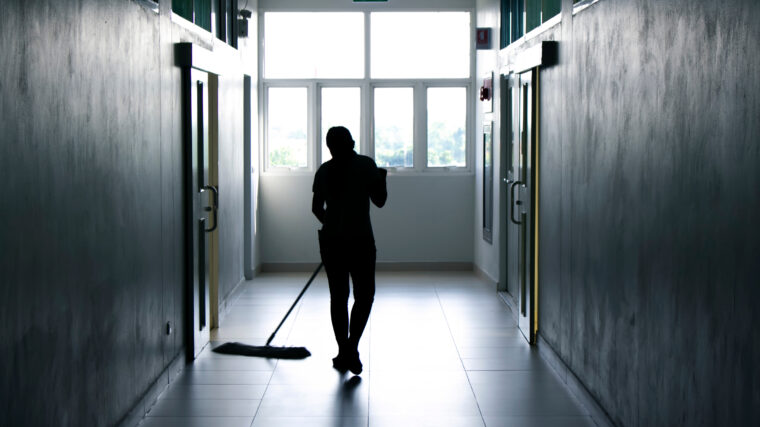As we look back over the past two years, it is fair to say that there were missed opportunities in effectively managing Covid-19 in higher education.
There was limited government advice, and there was no sector wide agreement on how to approach the delivery of the new academic year – especially at the start of the pandemic.
In this vacuum, it was left to institutions to adopt what they felt was the right and logical approach regardless of the advice to government by independent bodies on the safest approach.
This coming September, as well as facing the continuing (albeit smaller) impact of Covid-19 (albeit smaller) we face another impending crisis that will dramatically impact on student learning and engagement – the increase in cost of living. Student poverty is not new, but it will greatly exceed previous levels next academic year.
As happened in 2020 with Covid-19, will these anticipated and ‘known’ concerns be ignored until a crisis is upon us? Or, this time, will governments, regulators, and the sector take early collaborative and pragmatic action to put in place safety nets? In an environment where the government claims to be committed to the levelling up agenda, it is critical to recognize that although students may share the same campus, they don’t share the same opportunities – so it is critical not to level down the already disadvantaged.
What can we forecast?
We know that rent will substantially increase, due to rises in utility costs and property repayment interest rates. Back in 2020, HEPI reported that the cost of rent comprised 73 per cent of the maximum student loan outside London. In December NUS found that the average annual rent for purpose-built student accommodation in the UK in 2021-22 increased 4.4 per cent on the previous year – 16 per cent up on pre-Covid levels (2018-19). In the last decade, average rents have increased by 61 per cent.
Providers are highly likely to pass the costs on to students. Some universities may be tempted to attract applicants with a promise of accommodation costs being frozen for the coming year which is admirable as long as there is not a “condition” attached to it.
We know that the cost of travel will become more expensive and we know the price of food, which has been on the increase in the past year, will continue to rise due to global issues including the war in Ukraine.
For international students, who made up 12 per cent of all first year enrolments for first degrees and 63 per cent of masters enrolments in 2020-21, the costs of flight and accommodation will have a severe detrimental impact.
We can predict that the rise in cost-of-living expenses will have to make tough decisions that could result in them not being able to maximise their expensive higher education experience. These could include missing face to face in-person lectures because they need to work to earn money to pay bills, only being able to afford to go onto campus a couple of days a week due to travel costs, and not having spare funds to participate in co- or extra- curricular activities that provide numerous benefits including supporting health and wellbeing.
What are the risks?
However, with universities under pressure from the ministers and regulators demanding that all face to face teaching resumes, how are we going to navigate the impending challenges our students face, manage their understanding of what is a requirement, and help them be able to engage? How can we continue to use the advancements that were achieved overnight in enabling learning to continue in a flexible and engaging manner?
We know there has been an increase in reported issues with the mental health and wellbeing of students – not just as a result of the impact of Covid-19, but over the last 10 years. Since 2011, there has been an 89 per cent rise in the number of UK applicants sharing information about an impairment or condition with the highest year-on-year increases seen for mental health conditions.
And, as we know from Office for National Statistics data and Universities UK most recent report, suicide amongst higher education students may have slightly decreased in England and Wales between 2017 and 2020, but prevalent factors need to be taken into account. Male suicides are statistically significantly higher than females (which in is inline with the national pattern), and first year undergraduate males have a significantly higher suicide rate compared with those studying in other years.
The concern is that stress, anxiety and pressure caused by the rise in cost of living and an increase debt could lead to an increase in suicide especially among groups known to be at risk. And, as research shows, anxiety about fee levels and debt as research shows.
Action we can take now
Using the themes in the Student Experience Transitions model as a framework, there is integrated action that could be taken by governments, the wider university sector, and institutions now to help support students in their study journey. Universities have produced and shared amazing initiatives in response to Covid-19, so let’s do the same thing with student hardship. Here are a few suggestions:
Curriculum and assessment and Pedagogy
- Consolidate the teaching timetable to reduce the number of days on campus.
- Continue to provide flexibility with online lectures where possible but have a requirement for in-person workshop, lab, seminar attendance.
- Review mitigating circumstances and extension policies to encompass the impact of hardship on learning and assessment.
- Explore, understand and bridge knowledge and skill gaps by entry qualification and the impact of Covid- 19 for incoming and returning students via Pre-arrival and Continuation Academic Questionnaires.
- Start embedding mental health and wellbeing into the curriculum where pedagogy underpins its design and practice.
- Make provision for the impact of digital poverty in the learning experience
Support
- University management teams, staff and students should engage with the University Mental Health Charter and Student Minds – Home resources.
- Begin the production of accessible self-help information on health and wellbeing, and the management of expectations about the study pressure points throughout the study cycle.
- Provide free co- and extra- curricula activities to support health and wellbeing, create a sense of belonging and encourage engagement- all of which help with student success!
- Understand the expected use of student services on entry and through the study journey so support can be effectively targeted.
- Train staff to identify the warning signs of student hardship and ask the right questions in helping to provide support. There is surprisingly little guidance available for HE.
Finance
- Increase the provision of university hardship funds by both government and universities.
- Provide free travel cards to enable attendance on campus if no university transport is provided or accessible.
- Provide financial advice and support on budget management especially for new students before they arrive, and advice on how to reduce utility costs especially in shared accommodation where bills are not included in the rent (like managing gadgets and appliances), and effective cheap ways to stay warm during winter and stay well.
- Production of cheap, healthy and tasty recipe cards, and on-campus cooking lessons where students can eat the meals they have cooked together.
- Introduction of a community university larder and freezer (do not call it food bank to avoid stigmatisation) where students can access basic provisions. Items could be sourced from bulk buying and the Fare Share Scheme.
Employment
- Pay students for voluntary roles.
- Make policy provisions for difficulties in securing placements/work experience that are a course requirement, especially those unpaid.
- Be aware of the impact on the need to undertake paid work on attendance, learning and assessment.
- Be aware of students making difficult decisions around their income which may involve working in informal and unregulated markets such as in-person or online sex work.
- Provide paid ways for university unemployed alumni to provide support and mentoring to current students.
If we want students back on campus, then we need to support them to be there. This means planning for and addressing these “known” knowns. If we don’t, we will be failing our students, and the all important metrics by which we are weighed, measured and judged will suffer.














“Review mitigating circumstances and extension policies to encompass the impact of hardship on learning and assessment.”
That’s a complex one – talking to other senior leader peers across the sector – where there has been too much mitigation it seems to have lead to *worse* outcomes as students either put stuff off or buckle under the amount of credits they are carrying.
I agree with this point about mitigation. Where should we draw the line before mitigation affects motivation and engagement? If students are offered multiple submission points, they may be inclined to put off submission at earliest opportunity, resulting in assignments building up. This is indeed a tough one.
I agree with you Alan but we can introduce pragmatic initiatives to support students. An example is giving them one automatic 7 day extension per term to help reduce extenuation. Obviously, it wont be appropriate for all types of assessments, but where it is, they can be told. This could just be enough to get them over the line.
This is a really useful article. I like the idea of a community university larder and access to recipe cards – they would be realy good additions to campuses. Thanks Michelle.
I wonder whether schools and colleges could do more with supporting students living away at university. I taught financial literacy, but I think more could be done on life skills/cooking on a budget and so on. Maybe university outreach could also contribute to this. A great article, thank you, Michelle.
There are some great suggestions here for universities and colleges to start planning for what will certainly happen next academic year. With COVID we could reasonably claim no one could see the nature of the crisis coming. This crisis is clearly signalled and the greatest impact will be on the most disadvantaged students. Some university accommodation providers already offer cookery classes to students and there should be more sharing of good practice.